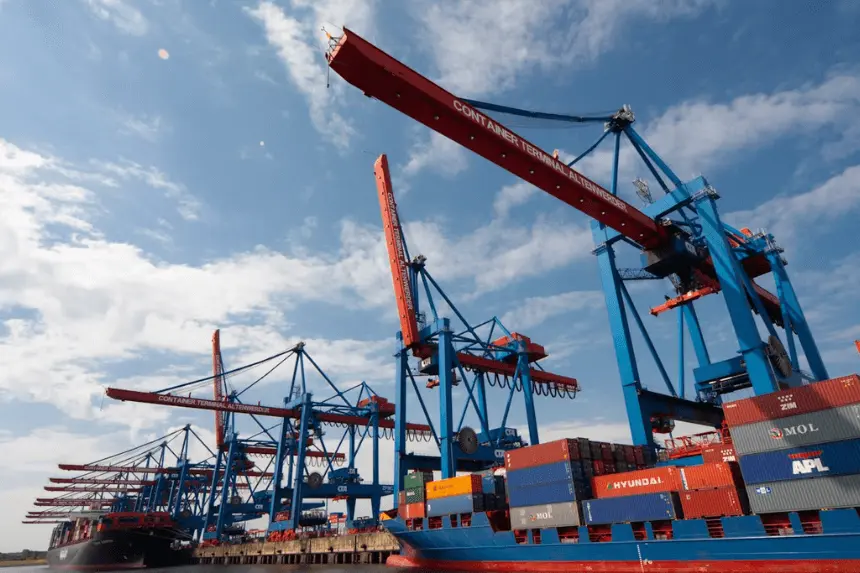As a critical decision in the trade policy of the United States, President Donald Trump has reported on the postponement of the higher duty rates on imports, where he has, at the same time, informed 14 countries of new duty rates (among others, Japan and South Korea). This is coming after a 90-day delay of some of the most punishing import taxes raised by the administration came to an end. Though July 9 has been the deadline that was declared by the government on these tariffs, Trump has prolonged it until August 1,, indicating possibly a further talk concerning trade with various countries.
- Why has the U.S. put higher tariffs on hold?
- What is included in the New Tariffs, and who will be affected?
- How Are Countries Responding to the Threat of Higher Tariffs?
- How do These Tariffs Affect the Economy?
- Can the U.S. Reach Trade Agreements by the August 1st Deadline?
- Closing Statement: Will the U.S. get trade agreements by the 1st of August?
Why has the U.S. put higher tariffs on hold?
This choice of postponing the implementation of higher tariffs follows the earlier postponement, which had given the Trump administration time to go in search of trade deals. As much as Trump has hinted that the new tariffs are firm, he has left a way to maneuver around them by saying that in case other countries come to the U.S. with alternative ideas, the tariffs might be revisited. Analysts point out that these delays tend to be common in trade negotiations, since most of these transactions take years of fine details. The postponement is also an indication of the complexity in striking a balance between protectionist policy and the international activities that are currently in progress. Here is the link to our article on Economic Impact Warning
What is included in the New Tariffs, and who will be affected?
In the latest tariff scheme proposed by President Trump, 14 countries are under threat, with Japan and South Korea possibly being hit by tariffs of up to 25 percent on some imports. Also, other nations, such as Myanmar, Laos, Thailand, and Cambodia, will be faced with tariffs of 25-40 percent. These latest tariffs are an indication of the intention to increase domestic manufacturing and safeguard American companies against international competitors. But another issue that the economic experts claim is that there is an economic effect on this, and such tariffs might raise prices among consumers and affect international trade.
In the letter that Trump sent to leaders of such countries, the new rates are spelled out, and possible revisions in tariff rates may arise depending on the results of the next talks, according to them. The change of tariff policy reveals that the administration is not shutting down the process of further negotiation, which might also depend on the diplomatic relations with an individual country.
How Are Countries Responding to the Threat of Higher Tariffs?
Different countries that will be directly impacted by these higher tariffs have been receiving mixed reactions regarding this news. Reacting to this, the Prime Minister of Japan Shigeru Ishiba,, lamented that the tariffs are still to be imposed, but Japan would continue to seek to have a win-win trade agreement with the U.S. Likewise, South Korea will increase discussions in order to prevent paying the increased rates of tariffs. The finance minister of Thailand also indicated that he was very optimistic that his country would have a tariff rate that would correspond to the rate enjoyed by the other countries in negotiations.
Such reactions prove that although the tariffs are a matter of concern, there is a readiness to negotiate. According to economists and experts in trade affairs, though the tactics used by Trump can appear to be violent, this can culminate in better trade conditions that the U.S. may be exposed to. Here is the link to our article on Steel Tariff Reactions
How do These Tariffs Affect the Economy?
The tariffs that have been proposed will impact both the U.S. aitsthe trading partners. On the one hand, the administration claims that tariffs will save the U.S. industries and will provide more jobs by making it unworthy to import other objects. Conversely, economists caution that increased tariffs will most probably create elevated prices of goods in the U.S for consumers in electronics, automobiles, and machinery,, among others.
There has been an indication of volatility in the stock market with major indexes in the U.S falling after the declaration of the new tariffs. As an example, the stock of Toyota, listed on the U.S. stock exchange, dropped 4 percent, as far as Japanese exports are concerned. Although tariffs could save an industry, the overall implications of tariffs are likely to make the trade discussions a bit complicated.
Can the U.S. Reach Trade Agreements by the August 1st Deadline?
Trade talks that will have all eyes on the 1st of August deadline. Whereas the U.S. has already signed contracts with the UK and Vietnam, partial arrangements with China, things are still unstable in other countries. Trump has mentioned that there can be more bargaining and negotiations, and the administration is in negotiations to seal a deal with countries. It is still to be seen whether these talks can be followed up by a wider agreement or will end up creating new tariffs.
Other important areas which are also closely related with the tariff policy include imports of steel and cars. Negotiations are ongoing, and there will be a keen interest in the business community worldwide in how tin in the U.S. will balance protectionism and international cooperation.
Closing Statement: Will the U.S. get trade agreements by the 1st of August?
Many countries will have a short-term relief as the waiver of additional tariffs is delayed, but the deadline of August 1 stands out as a turning point in American trade policy. The current administration, headed by President Trump, has been vocal on its stand regarding tariffs but has been pliable during negotiations. The result of these negotiations will define the future of the American trade with some of its most valuable partners. Tariffs are still a major subject, and how they will either boost or come in the way of world economic stability is yet to be observed. The next few weeks will be crucial in determining the course of trade of the U.S.








